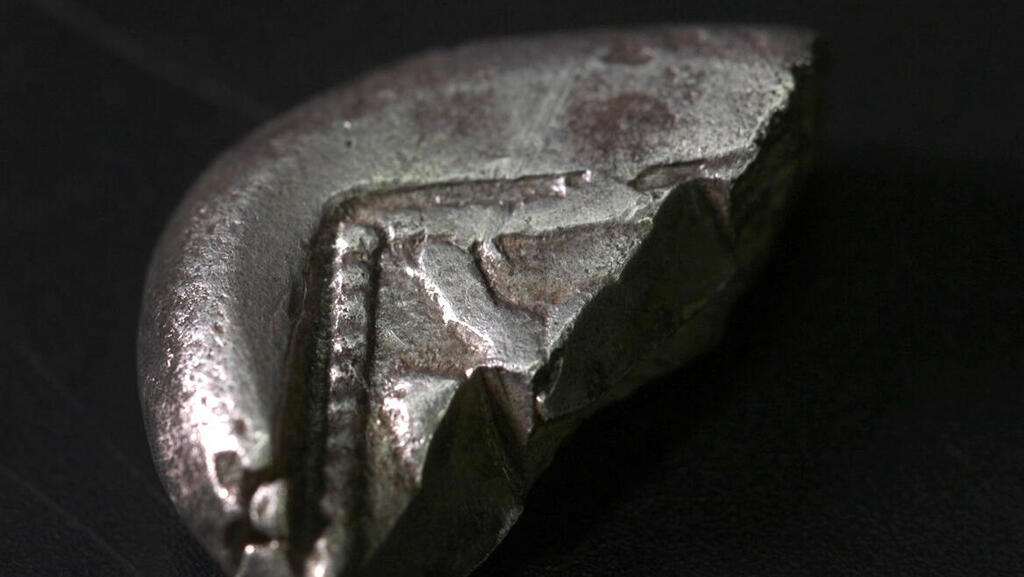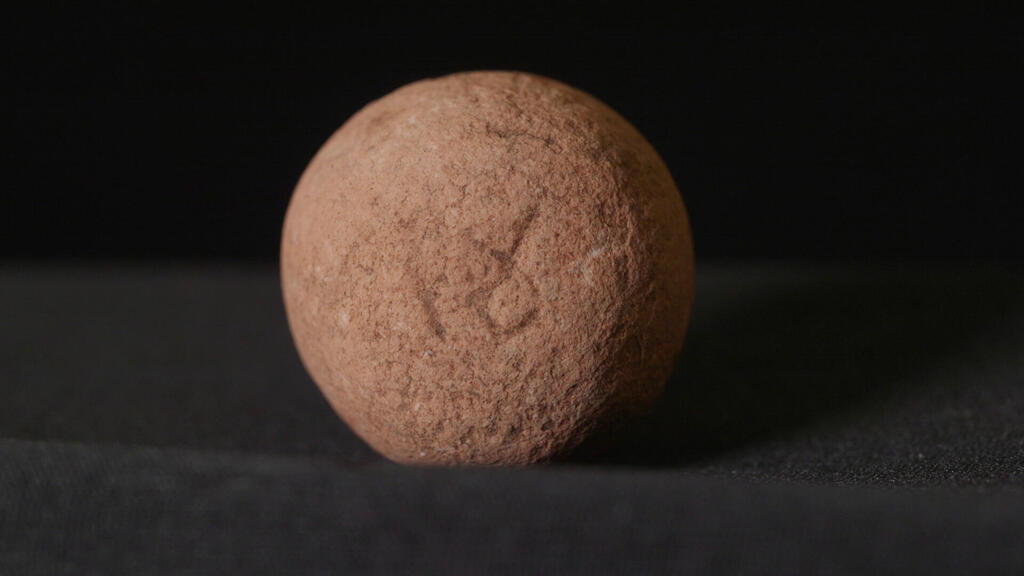Israel Antiquities Authority (IAA) on Wednesday announced the discovery of a rare silver coin, roughly 2,500 years old, which was found in the Judean Hill and is considered one of the earliest evidence in Israel of the social transition to the use of coins.
Read more:
In addition, the excavations also uncovered a building dating to the Kingdom of Judah period, in the 7th century BCE (2,700 years ago). Inside was a dome-shaped stone weight engraved to represent its value as one shekel.
2 View gallery


The rare coin that was discovered in the Judean Hill
(Photo: Israel Antiquities Authority)
“Through a tiny object like a coin, it becomes possible to trace human thought processes and observe that our economic habits have remained largely unchanged for thousands of years - only the technology has changed,” IAA Director, Eli Escusido, said in a press release statement.
Dated to the Persian period between the 6th and 5th centuries BCE, the coin was found in an intentionally broken state. The less-sophisticated minting process used a “sunken” stamp rather than the later technique which would leave a protruding imprint.
"The coin is extremely rare, joining only half a dozen coins of its type that have been found in archaeological excavations in the country" IAA Numismatic Department head, Dr. Robert Kool, said.
2 View gallery


The shekel weight from the First Temple period uncovered at the site
(Photo: Israel Antiquities Authority)
"The coin was minted in a period when the use of coins had just begun. The rare find contributes information concerning the way trade was carried out and the process whereby global commerce moved from payment by weighing silver pieces, to the use of coins,” he explained.
As for why the coin was intentionally cut into two, it was exactly due to the gradual move from weighing silver pieces to using coins. So, despite it being minted as a coin, it went on to be used as a weighted piece of silver, rather than as a coin.

